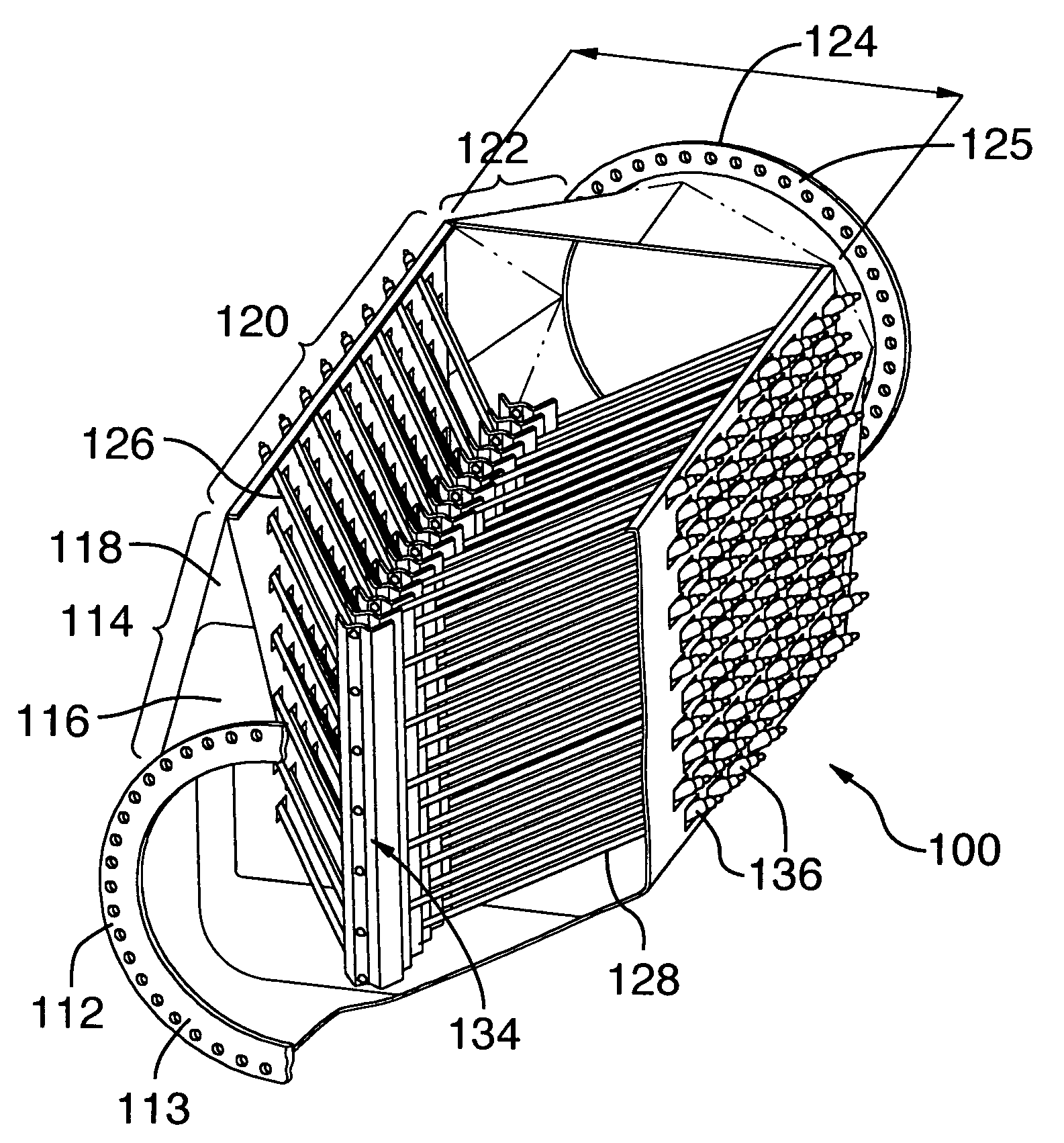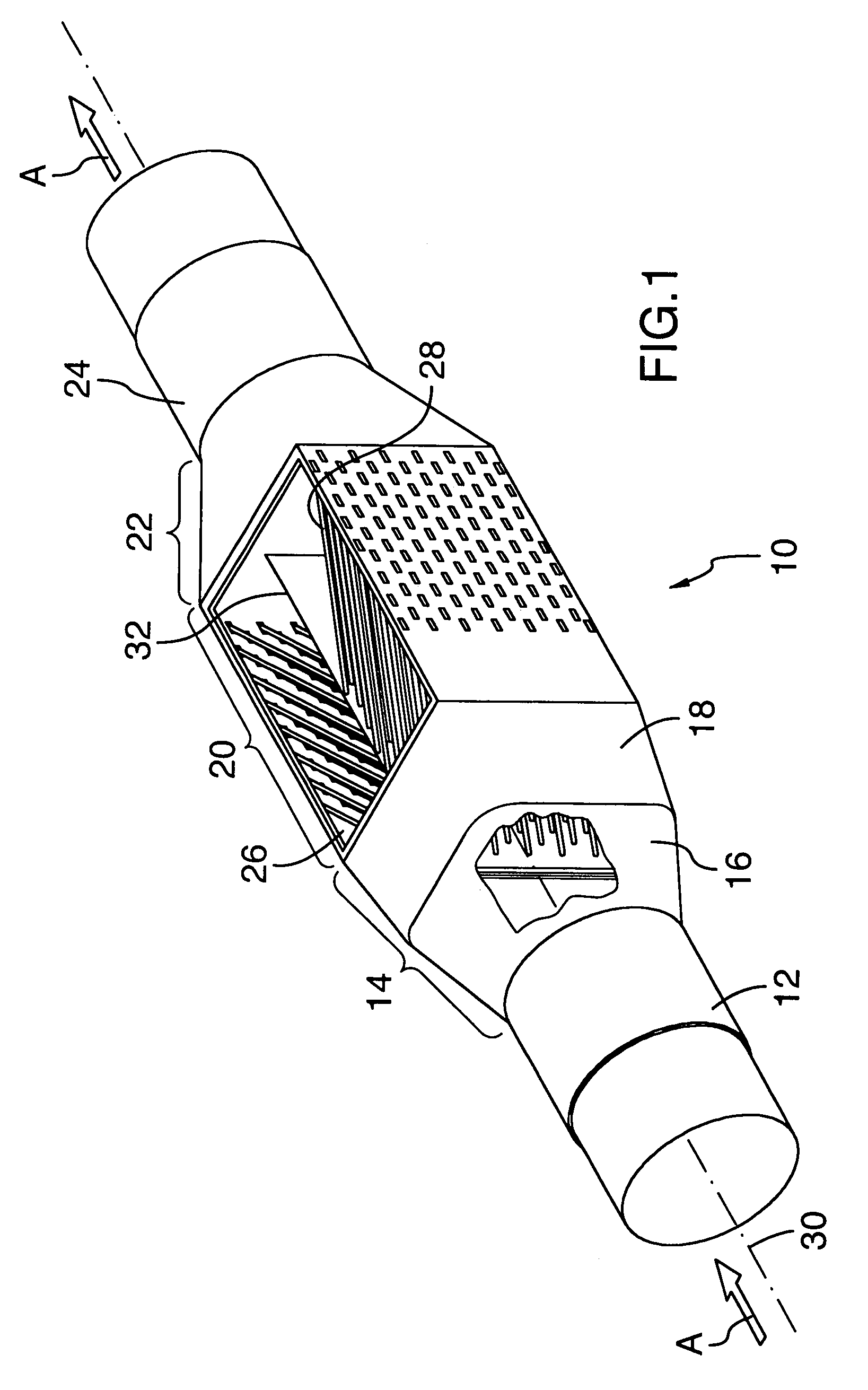Fluid treatment system
a treatment system and fluid technology, applied in liquid separation, water/sludge/sewage treatment, instruments, etc., can solve the problems of high capital cost of reactors, difficult access, and manifested problems, and achieve the effect of increasing fluid flow velocity and decreasing fluid flow velocity
- Summary
- Abstract
- Description
- Claims
- Application Information
AI Technical Summary
Benefits of technology
Problems solved by technology
Method used
Image
Examples
Embodiment Construction
[0102]With reference to FIG. 1, there is illustrated a fluid treatment system 10. Fluid treatment system 10 comprises an inlet 12 and an outlet 24. Disposed between inlet 12 and outlet 24 is a fluid treatment zone 20.
[0103]Fluid treatment zone 20 is interconnected to inlet 12 by an inlet transition zone 14 comprising a first transition region 16 and intermediate transition region 18. Outlet 24 is interconnected to fluid treatment zone 20 by an outlet transition zone 22.
[0104]As illustrated, fluid passes through fluid treatment system 10 (including fluid treatment zone 20) in the direction of arrow A.
[0105]As shown, each of inlet 12, inlet transition zone 14, fluid treatment zone 20, outlet transition zone 22 and outlet 24 have a closed cross-section. The use of the term “closed cross-section” is intended to mean an enclosure which bounds a flow of fluid on all sides and / or surfaces.
[0106]As shown, inlet 12 and outlet 24 have a circular cross-section much like a conventional pipe arr...
PUM
| Property | Measurement | Unit |
|---|---|---|
| angle | aaaaa | aaaaa |
| angle | aaaaa | aaaaa |
| angle | aaaaa | aaaaa |
Abstract
Description
Claims
Application Information
 Login to View More
Login to View More - R&D
- Intellectual Property
- Life Sciences
- Materials
- Tech Scout
- Unparalleled Data Quality
- Higher Quality Content
- 60% Fewer Hallucinations
Browse by: Latest US Patents, China's latest patents, Technical Efficacy Thesaurus, Application Domain, Technology Topic, Popular Technical Reports.
© 2025 PatSnap. All rights reserved.Legal|Privacy policy|Modern Slavery Act Transparency Statement|Sitemap|About US| Contact US: help@patsnap.com



